Pictures: Lyle Such
Words: Thu Buu
Camera: Canon 5d MkIV

Atlas Mountain Trek - Day 1
Our decision to summit Mount Toubkal before exploring the area was due to a couple of factors. First off, we wanted to be in our best physical condition for the high altitude climb. The longer we stay in a foreign country and experiment with different foods, the more probability of getting sick, so it made sense to attempt it soon after our arrival. Secondly, Hang decided to join us for part of Morocco, and climbing Toubkal was not an activity she was interested in doing. So we scheduled to meet Hang at the Ecolodge in Ouirgane after the completion of our two-day traverse hike that would take us through the small villages and over the mountain passes of the High Atlas region. With the most physically demanding part of our trip successfully achieved, we were happy to slow down and enjoy the next few days of exploring the area at a casual pace.

When in Morocco, one never needs a watch. It didn’t matter that our meeting time was 8 AM, we were up before dawn. Mohammed explained that in these remote mountainous regions, the morning call to prayer is preceded by a wake up chant that starts at 5:30 AM. Because each village only has one mosque, people need time to get ready and make their way to the mosque by 6 AM in time for the morning prayer. There is no way of ignoring the booming chanting and prayer that rings out loudly from the mosque speakers precisely at prayer times throughout the day.


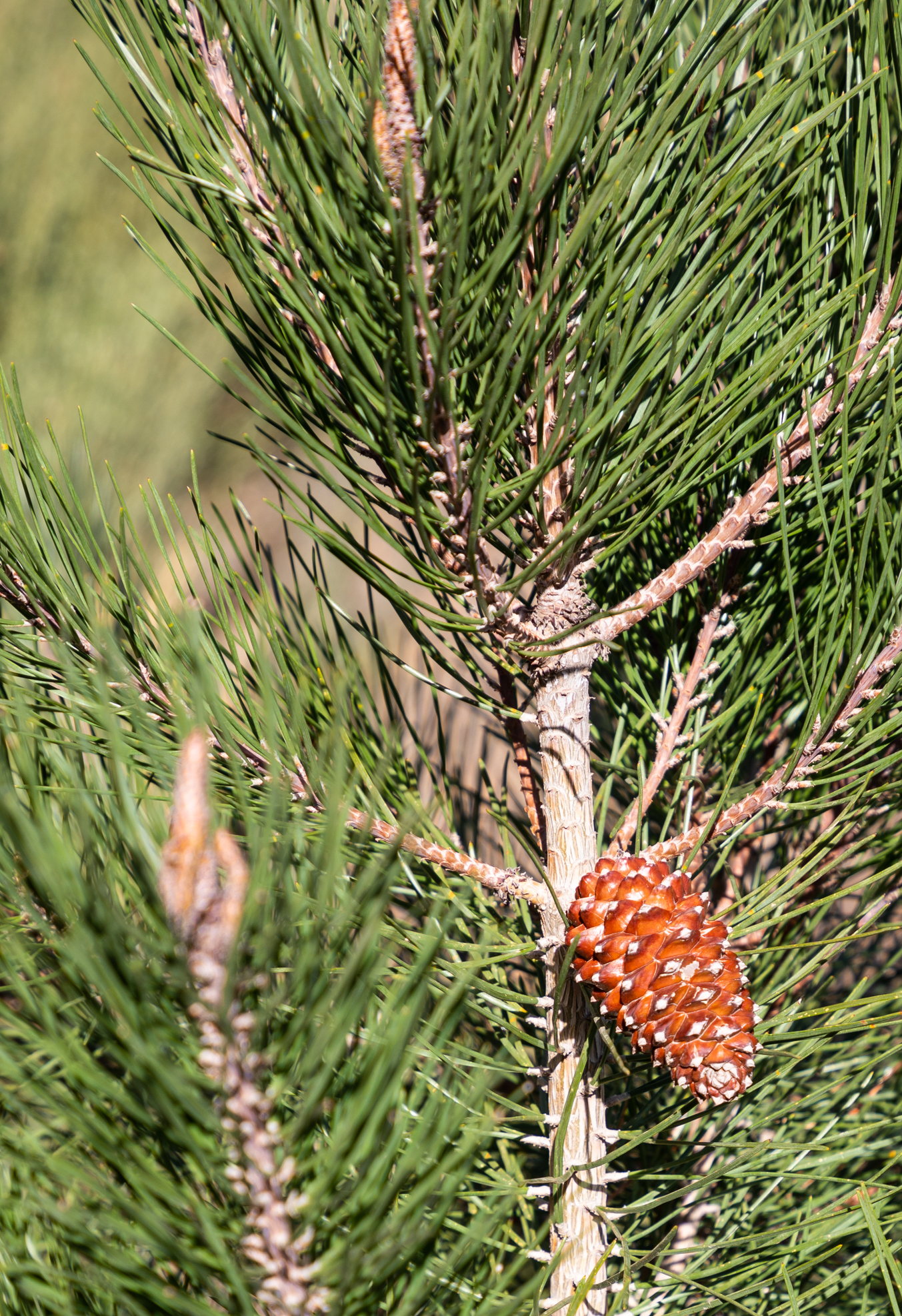

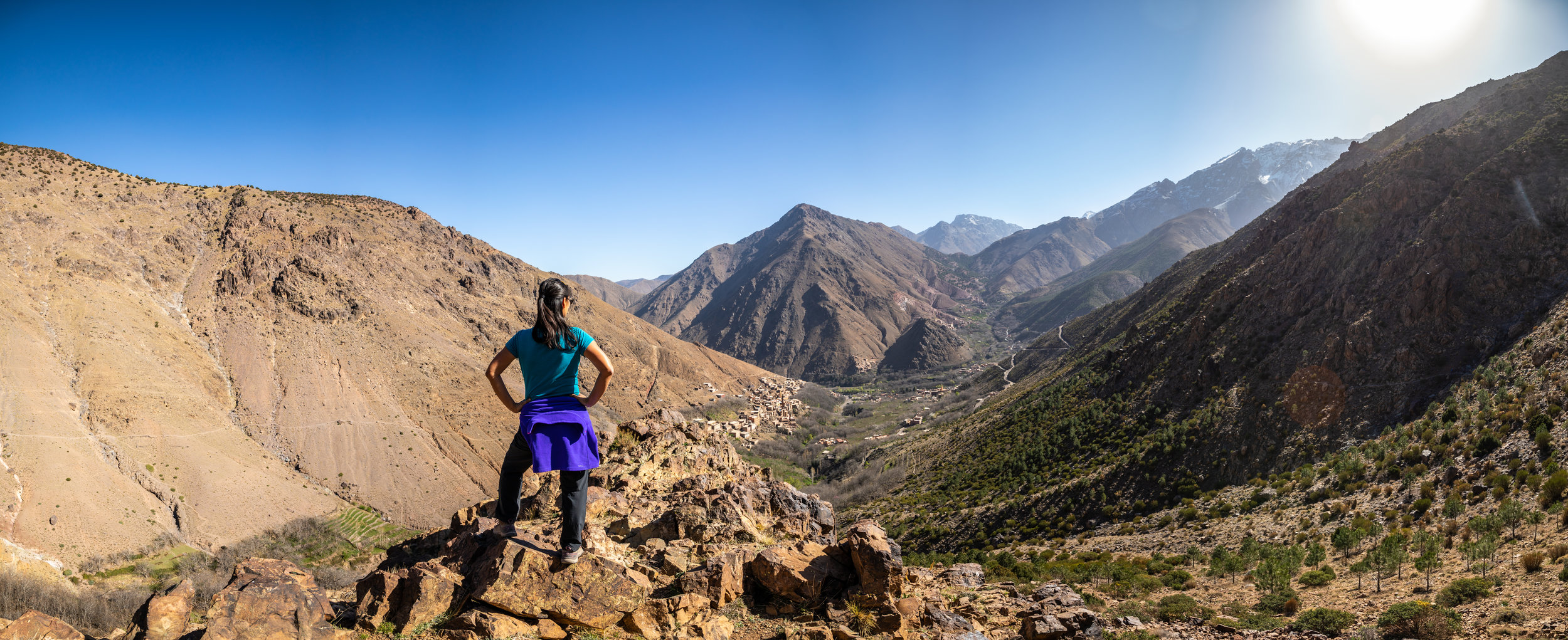
After a nice breakfast that was more reminiscent of a European table, perhaps due to the French occupation, we began right away with a steep climb out of the village. Looking back at the green valley below, we saw how the villages spread out along the river with the plots of land closest to the river reserved for agriculture and land further up along the side of the mountains was where the villages sat.
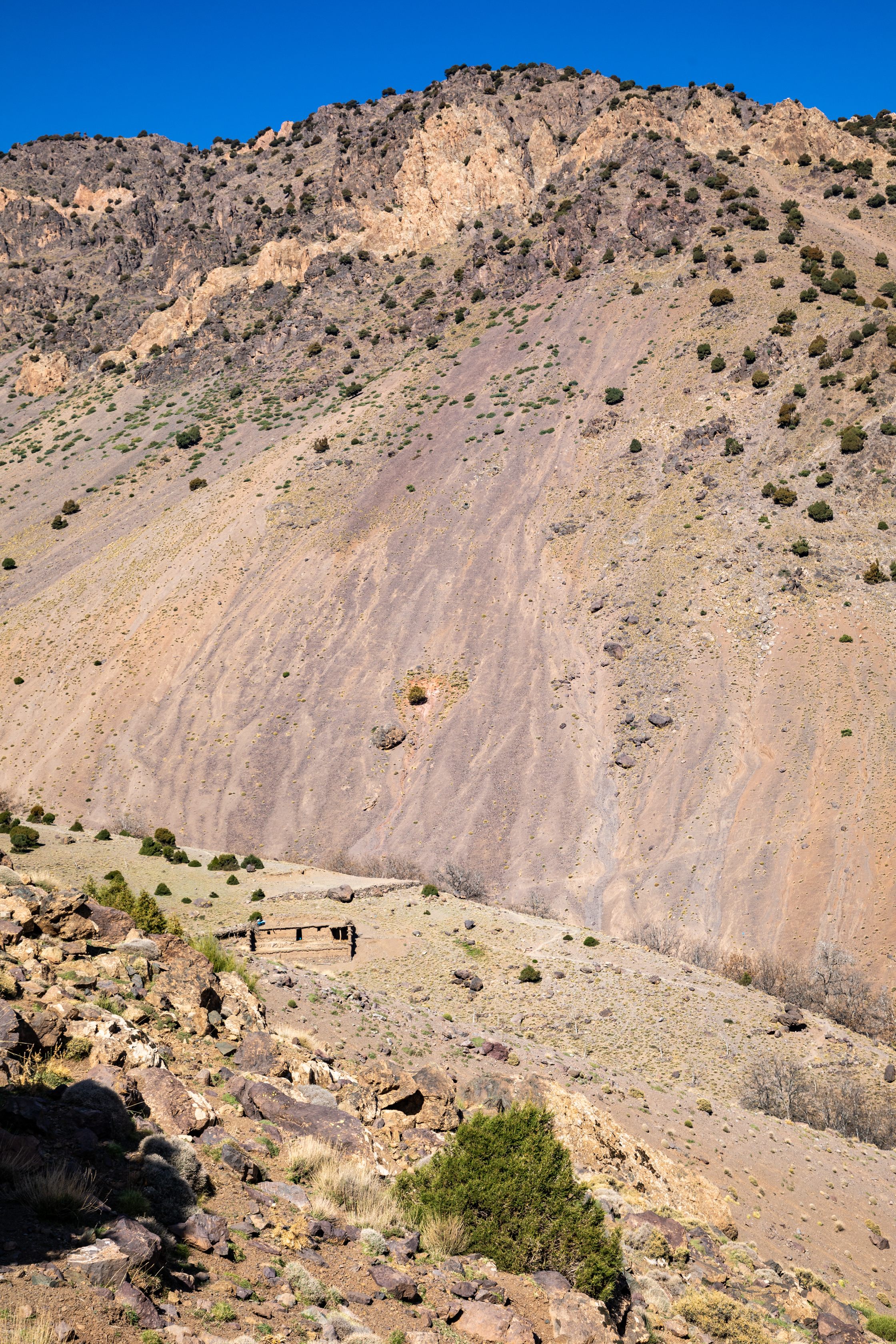

That rock formation cut into the side of the mountain reminds me of intestines.

This ascent to the pass seemed harder than the climb up Toubkal. I think the heat played a big role. I made my way up quickly leaving Lyle trailing behind, and guess what I found at the very top? You guessed it. An orange juice stand! So excited about my find, I bounded back down to tell Lyle of the wonderful treat waiting for us at the top!



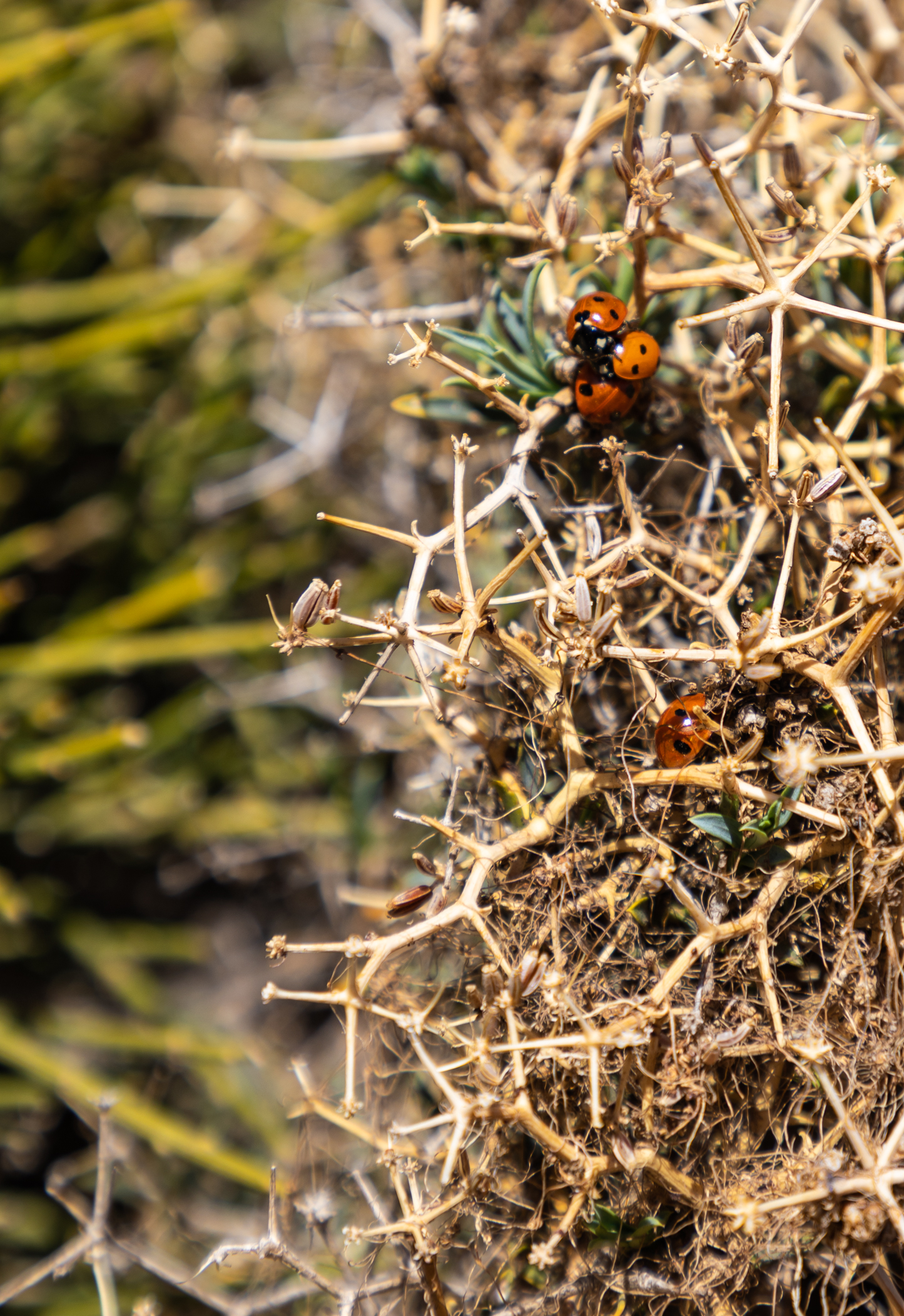
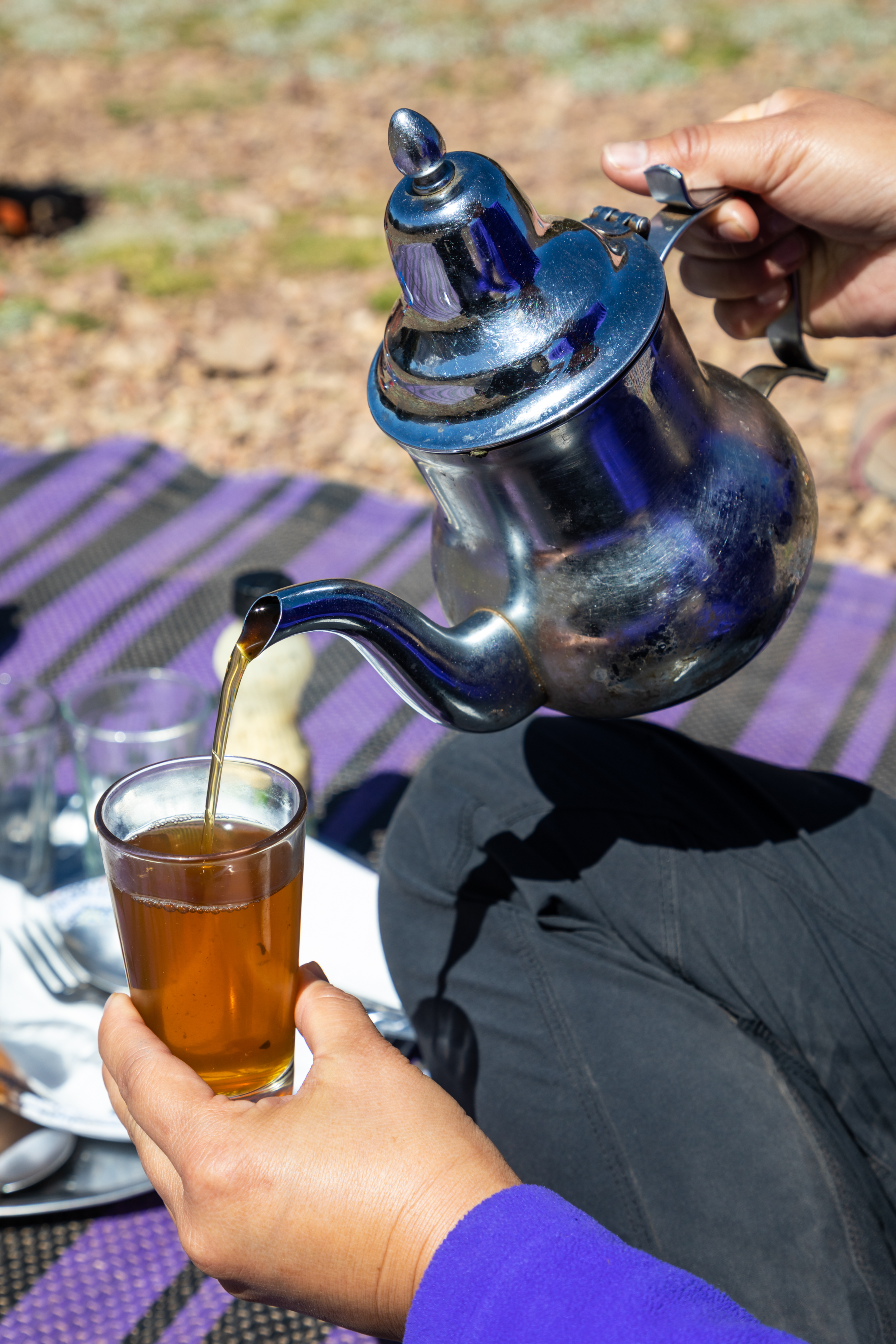

We spent a leisurely amount of time basking in the gentle sunshine and enjoying the 360 degree view while our lunch was once again being prepared. We were definitely getting used to this luxury. Surrounded by such beauty and peace, we felt like we were in an alternative version of Sound of Music.



Only a few other small groups shared our picturesque picnic area. They were all doing day trips and after a short rest, had to turn around and hike back down the pass. We had the mountaintop to ourselves until a herd of goats rambled up the mountain into our space. We weren’t sure how aggressive they would get as Lyle inched closer and closer to get better pictures. We needn’t have worried. They were more interested in the brush and shrubs than any clicking camera.

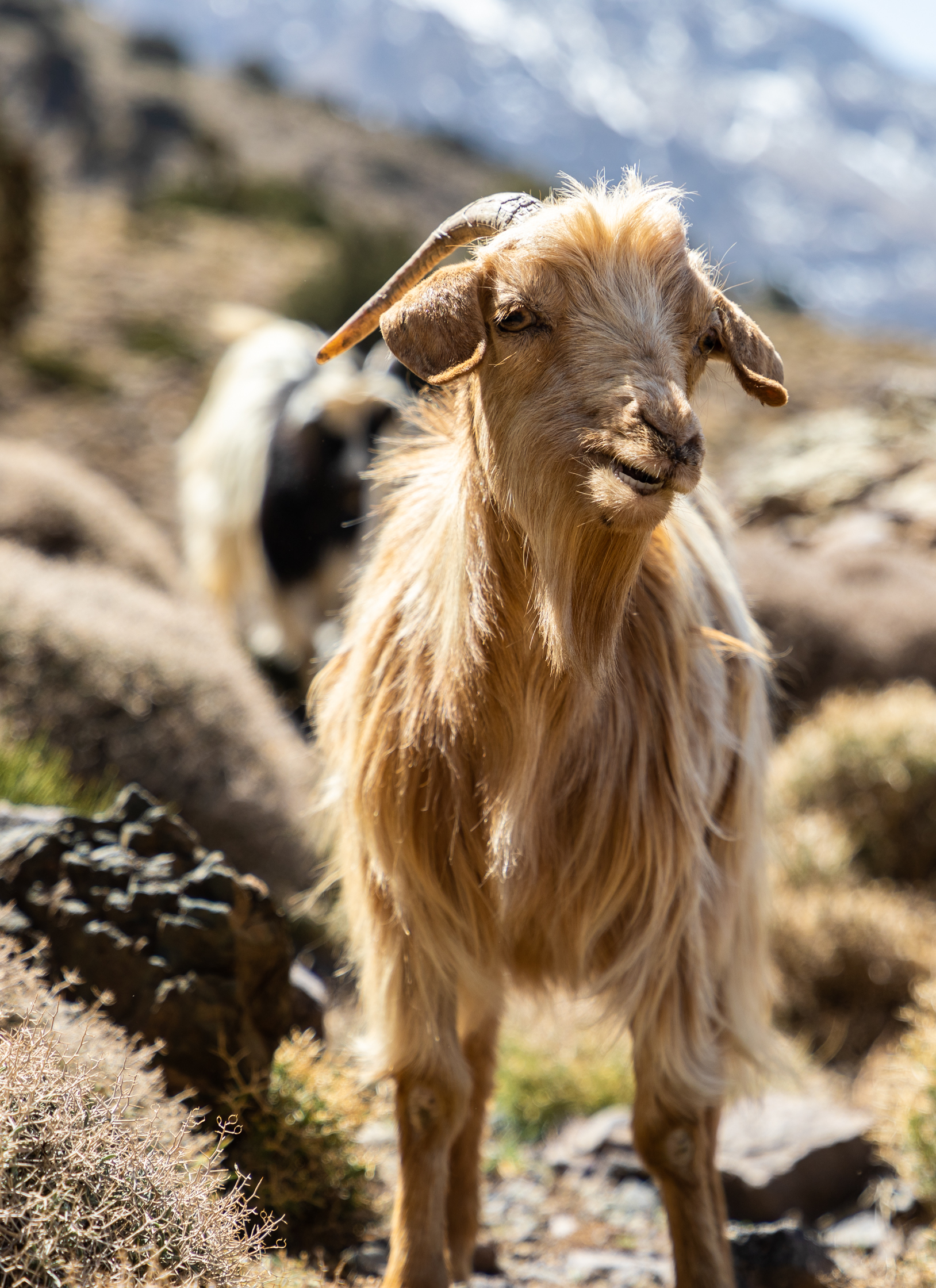

After the excitement of the herd had passed, we were ready to move on. Not far down the trail, we came upon another herd of goats coming toward us in an orderly fashion on the path. We wondered how to approach this problem, but the animals were ahead of us. They veered off the path, some making a semicircle below us while others climbed up the slope over us.

Once they passed us by a safe distance, they reformed their single-file line and continued on their way as if nothing had happened. The trails we walked on that day were primarily goat trails.





Originally, the first day of this through trek was supposed to be short, about five miles long, assuming we would have been tired from the summit and return trip from the day before. Mohammed had other plans for us. Seeing that we were physically up to it, he took us on the most roundabout path, adding roughly five miles to our day, and we are most grateful for the extra mileage that brought us to one of the most beautiful areas on the entire trek.


Deep in the crease of another valley lies the isolated summer village of one of the few nomadic tribes who still migrate with their animals with the passing of the seasons. Steps of luscious green terraces lined the whole mountainside. Long ago, villagers had engineered a relatively simple yet intricate system of small man-made canals to capture snowmelt and channel water to each level of the terrace so that even in the hottest summer months, their crop could still be watered.

We spotted a small group of the nomads lounging in the shadows of the rocks which surround the terraces. Their sheep lazily grazed on the grass in the hot sun.

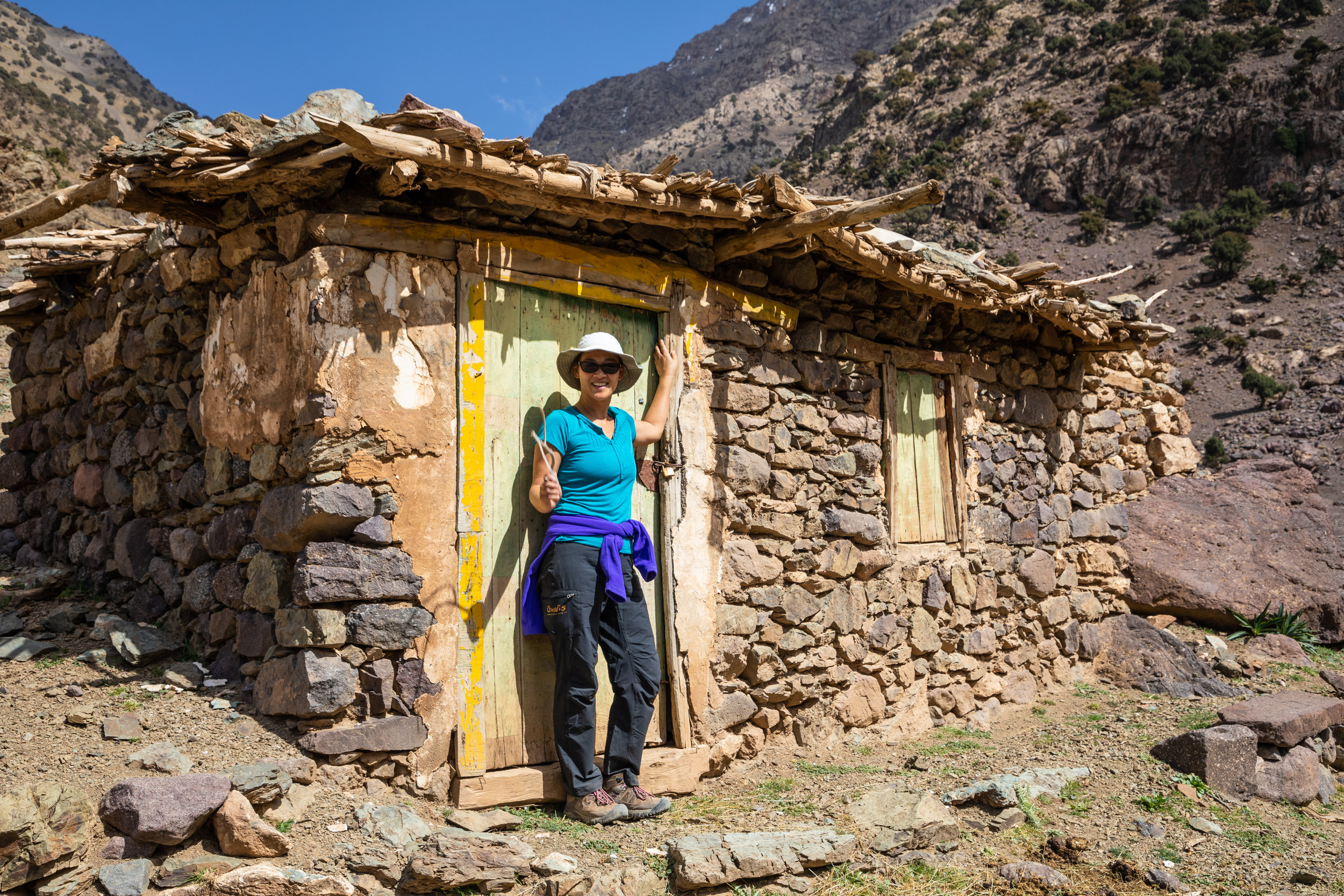
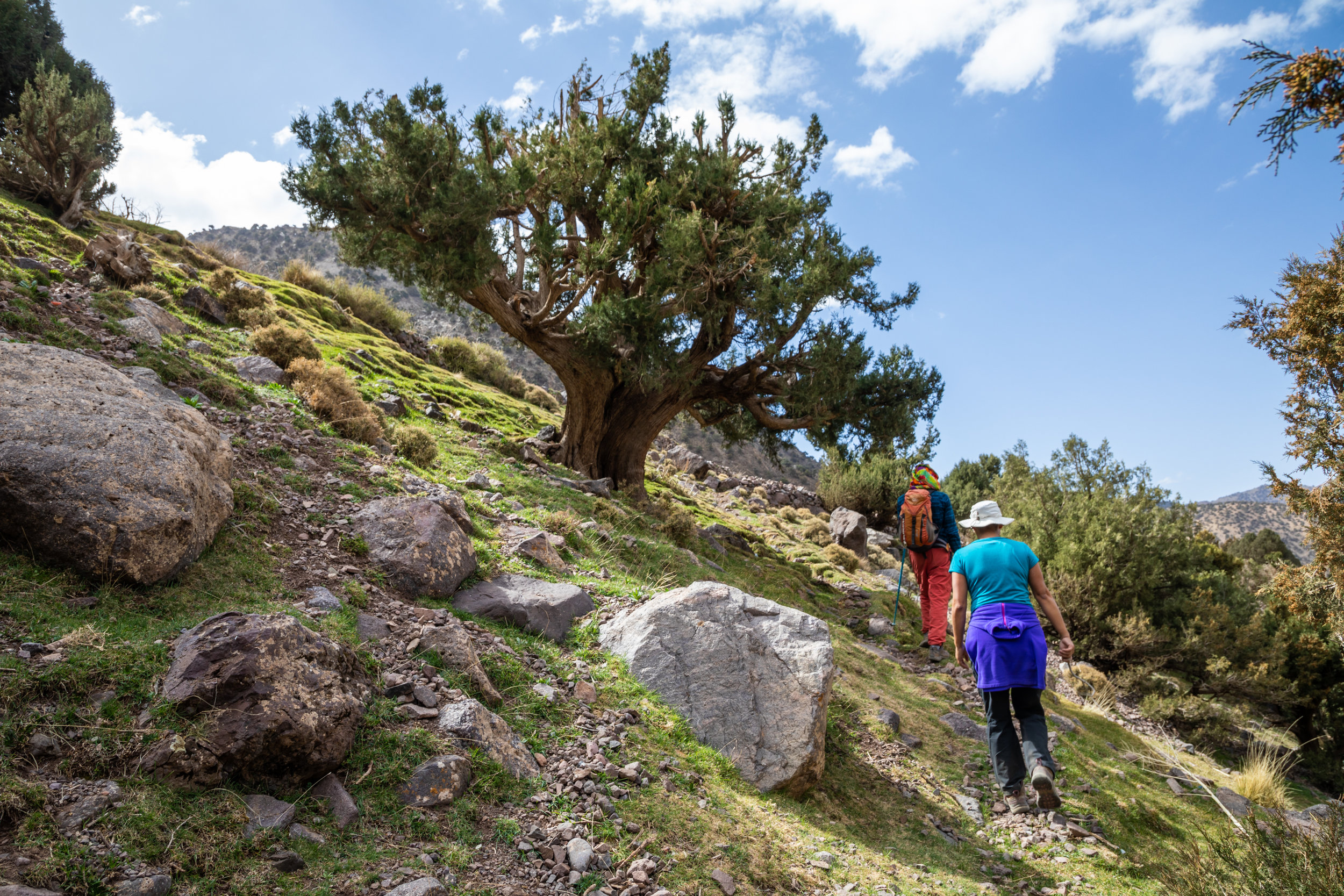


We were mesmerized by the shimmering sunstars dancing on the surface of clear water gently flowing through the canal. The slopes of greenest grass, the bluest sky punctuated by puffs of white clouds, the radiant sun giving life to everything it touches. The harmony and balance we felt in this place at this moment was ancient and magical. We were compelled to stop, sit down, take off our shoes, let the water caress our skin and reenergize our souls. It’s moments like this that we seek in our hiking adventures. These moments reconnect us with the earth and the universe and bring us so much joy. We did not want to leave. But we still had a long way to go to reach our gite for the night, so reluctantly we followed Mohammed out of the valley.

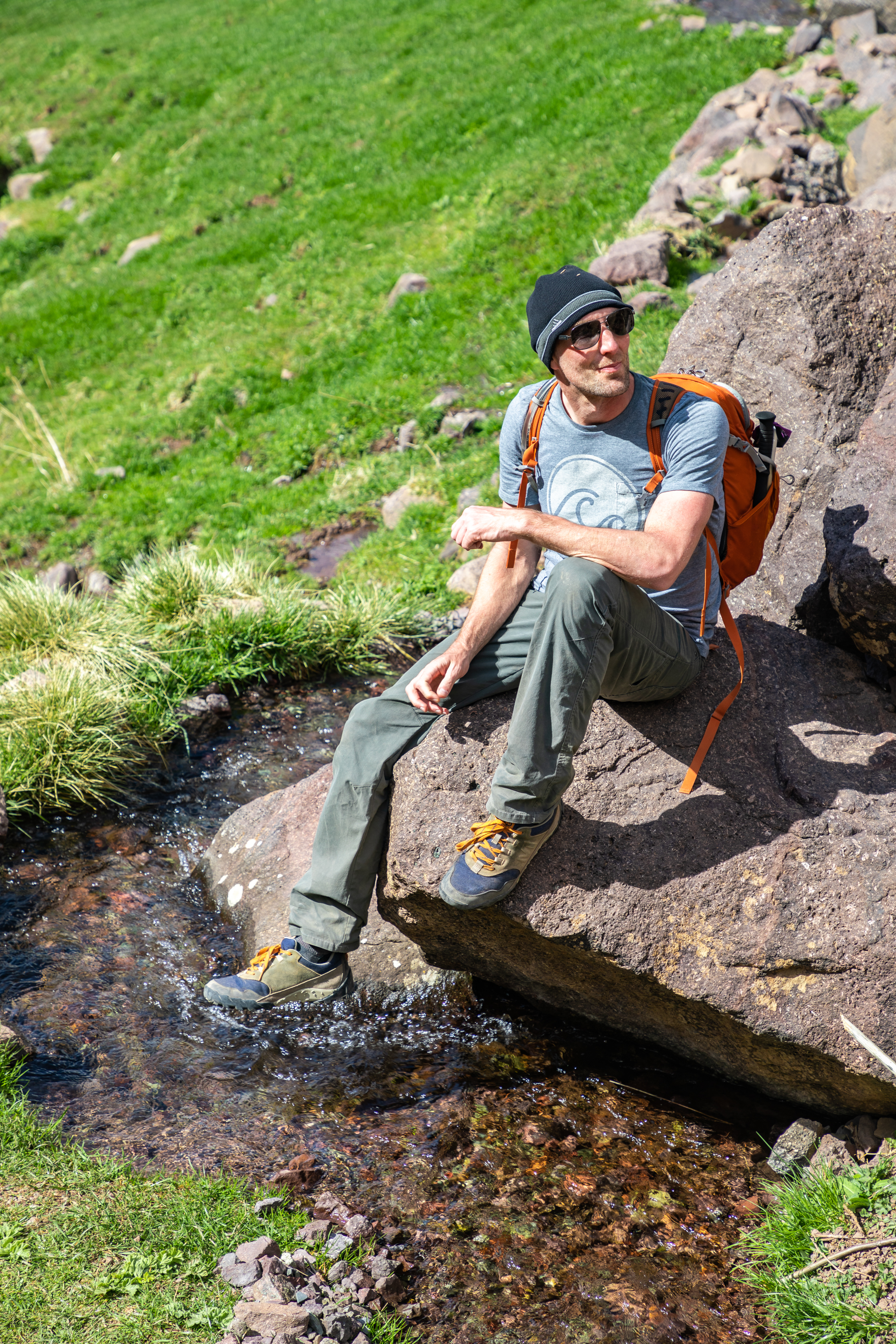
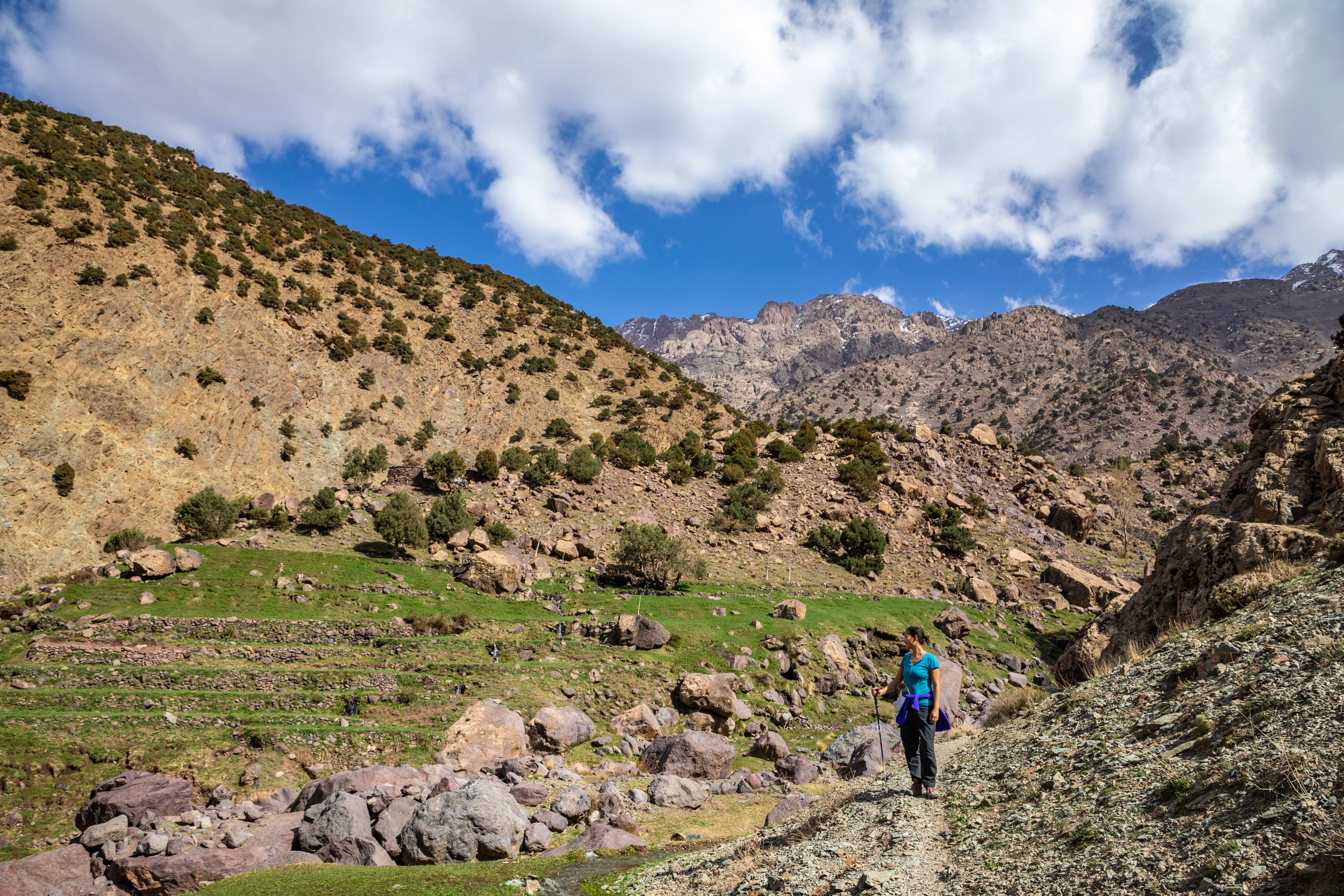
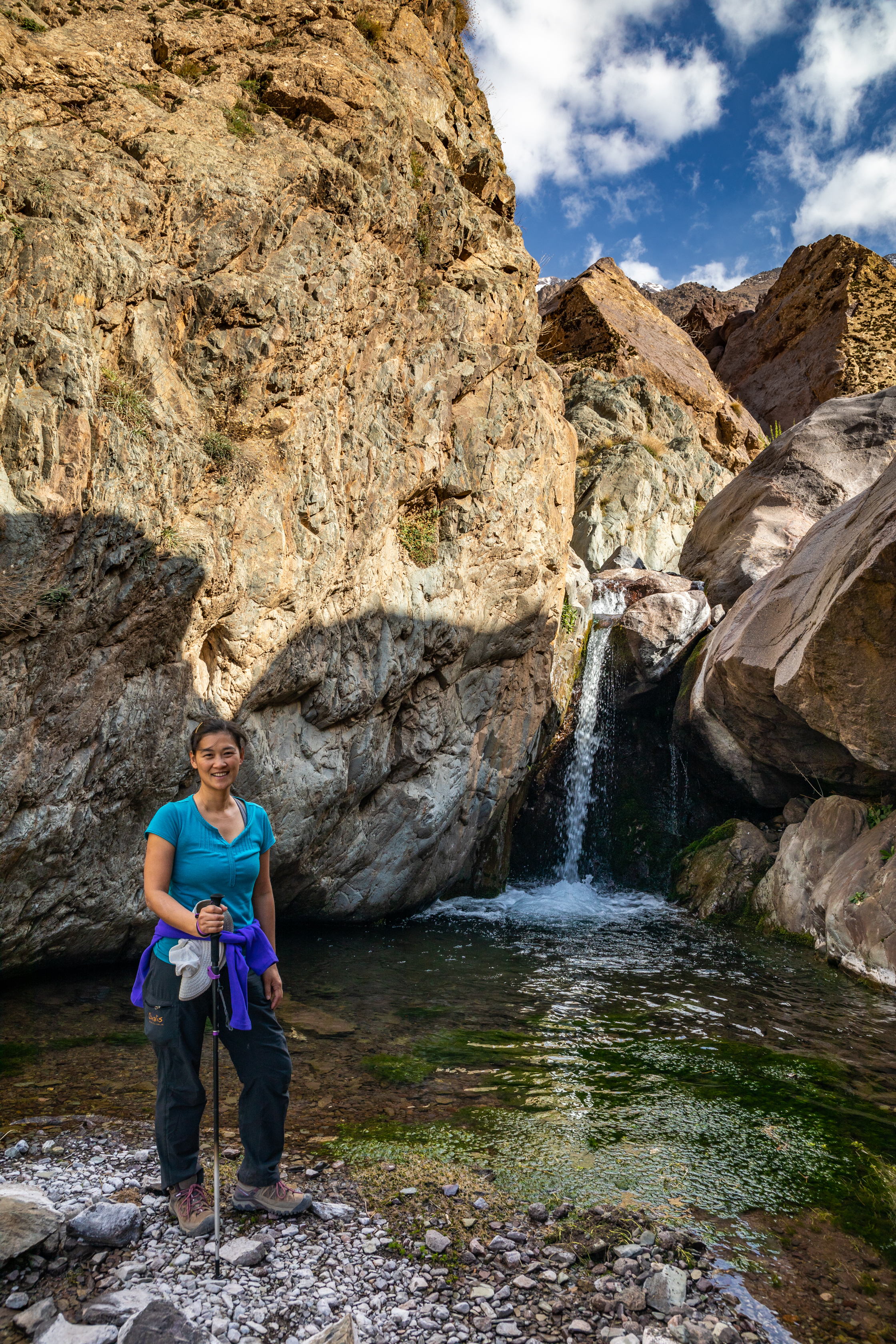
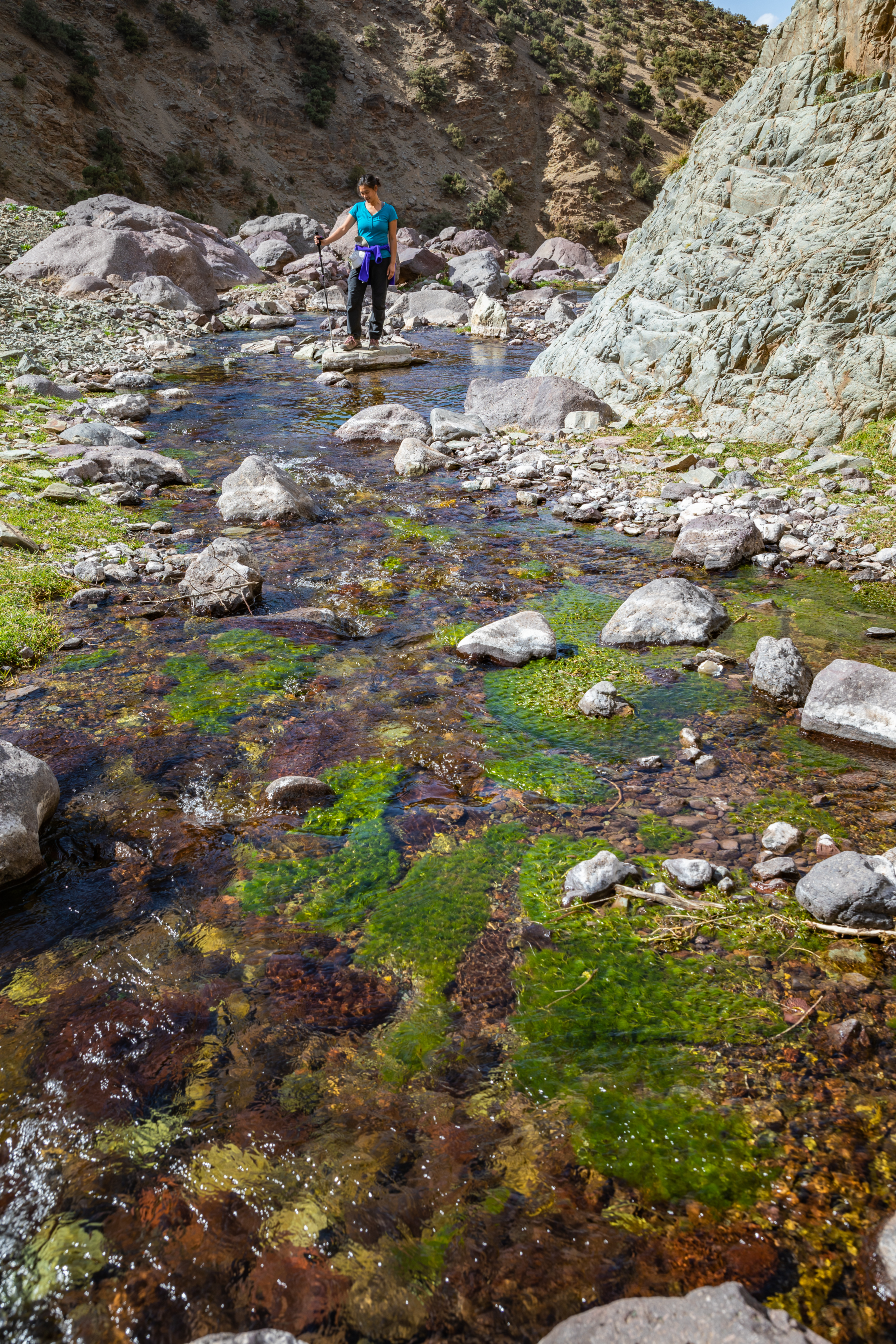
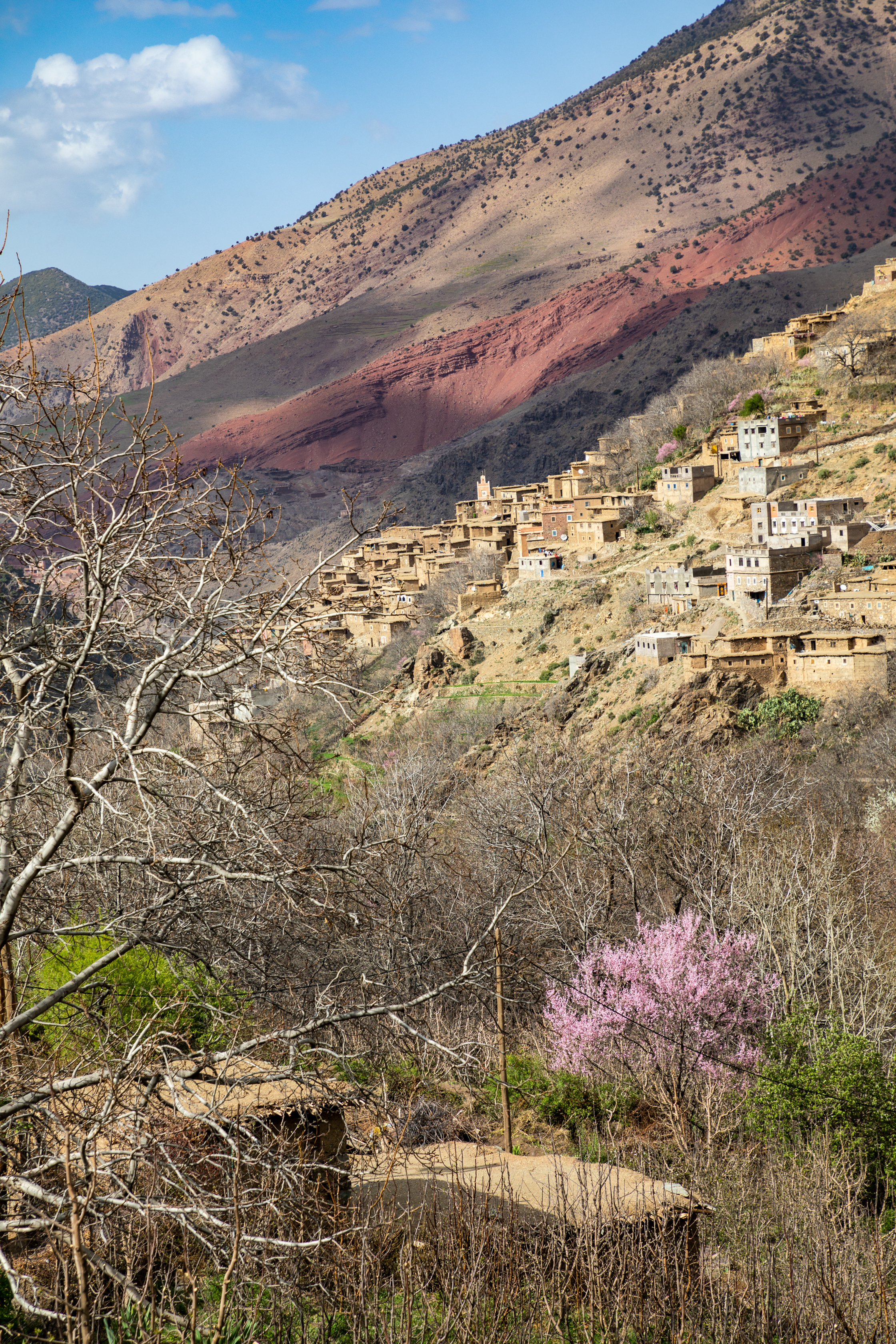


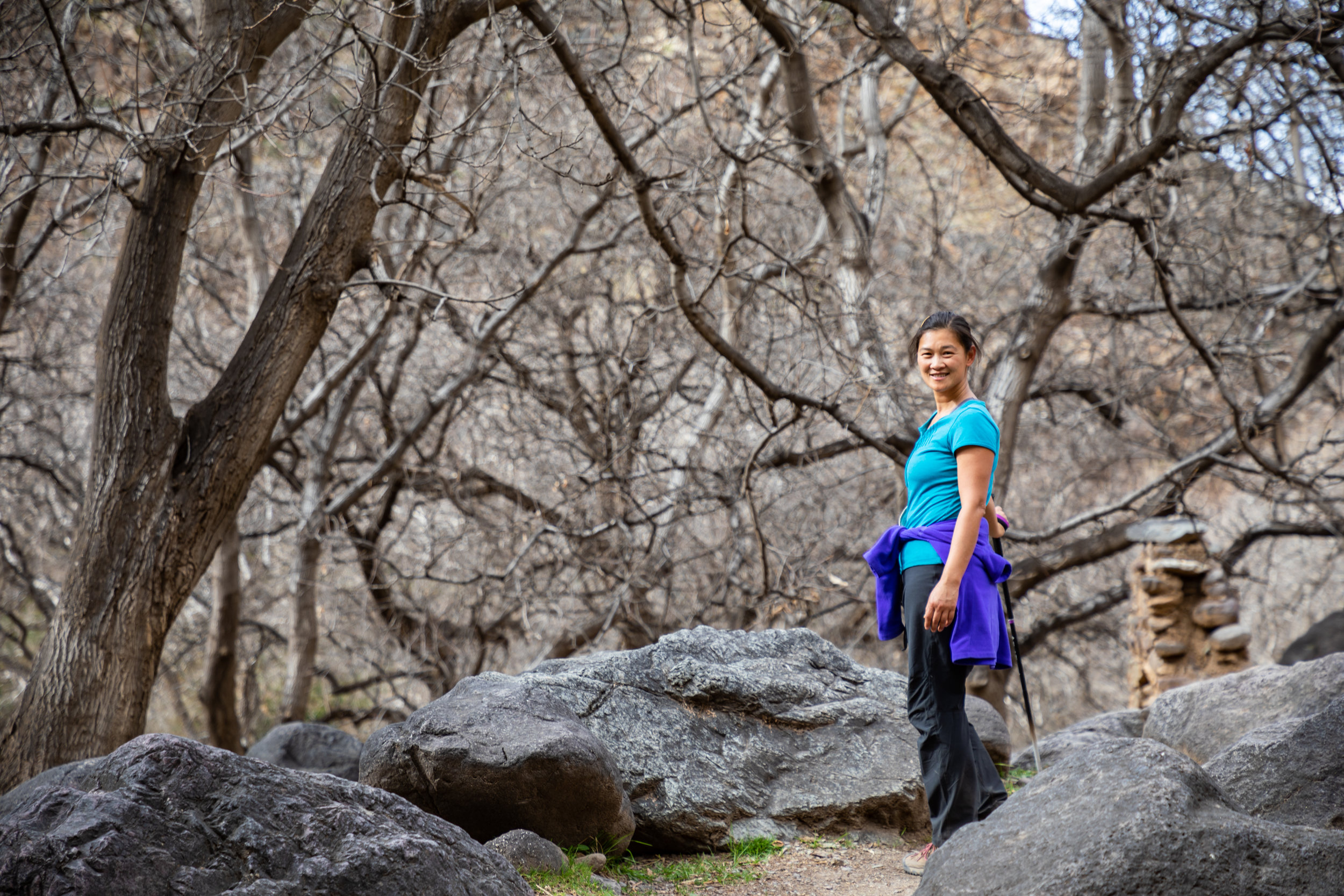
We picked up our pace and walked through a few other smaller villages. On the outskirts of one village, we encountered a little kid’s soccer game. Some of the kids were wearing flip-flops. The youngest one who looked about six years old took a pretty hard hit on the unforgiving dirt surface, but it didn’t faze him at all. He was a tough cookie. Soccer is so universal. We’ve witnessed soccer games in so many countries we’ve been to. From the smallest patch of grass to the most confining rooftop court, people seem to find a way to enjoy this sport.


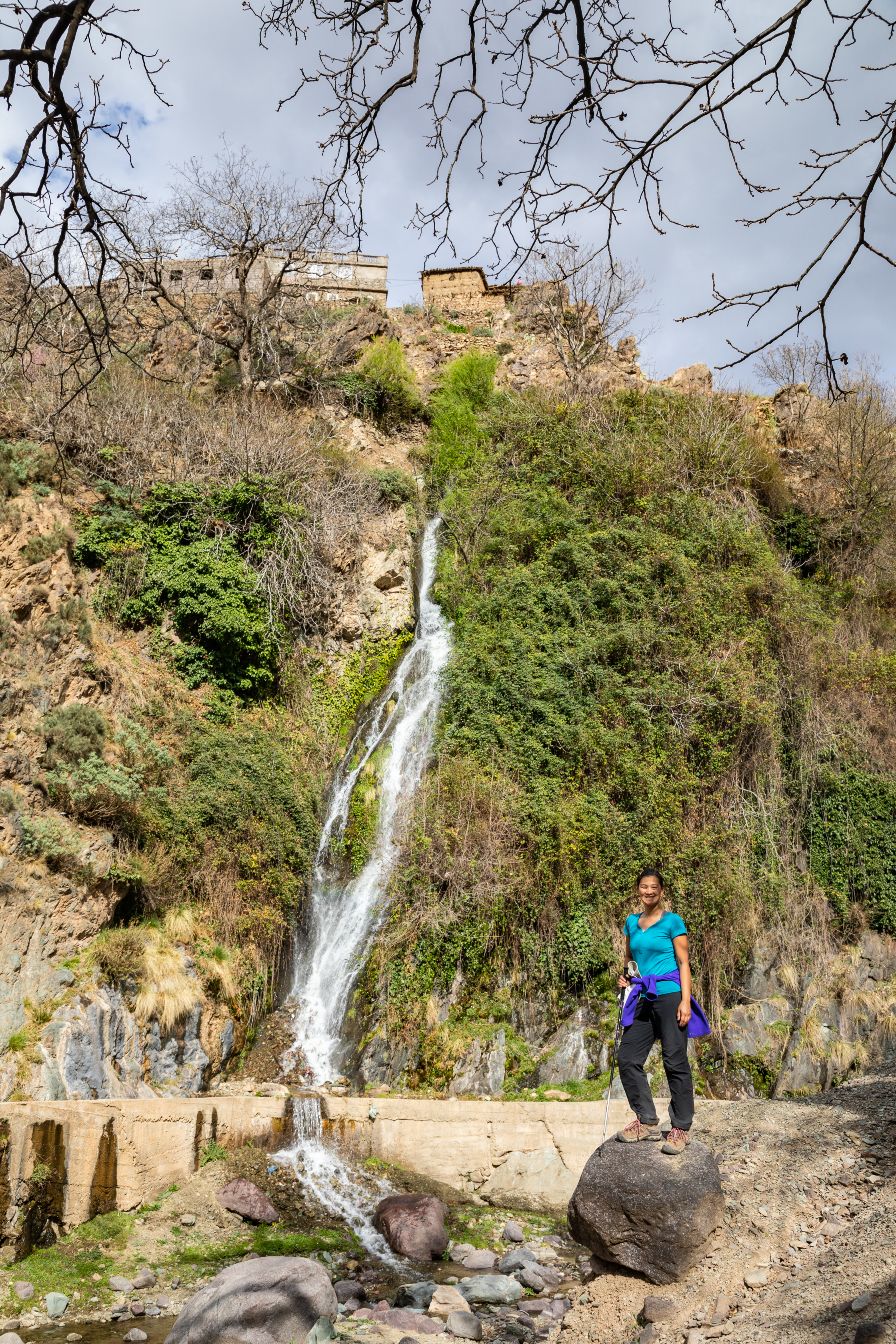





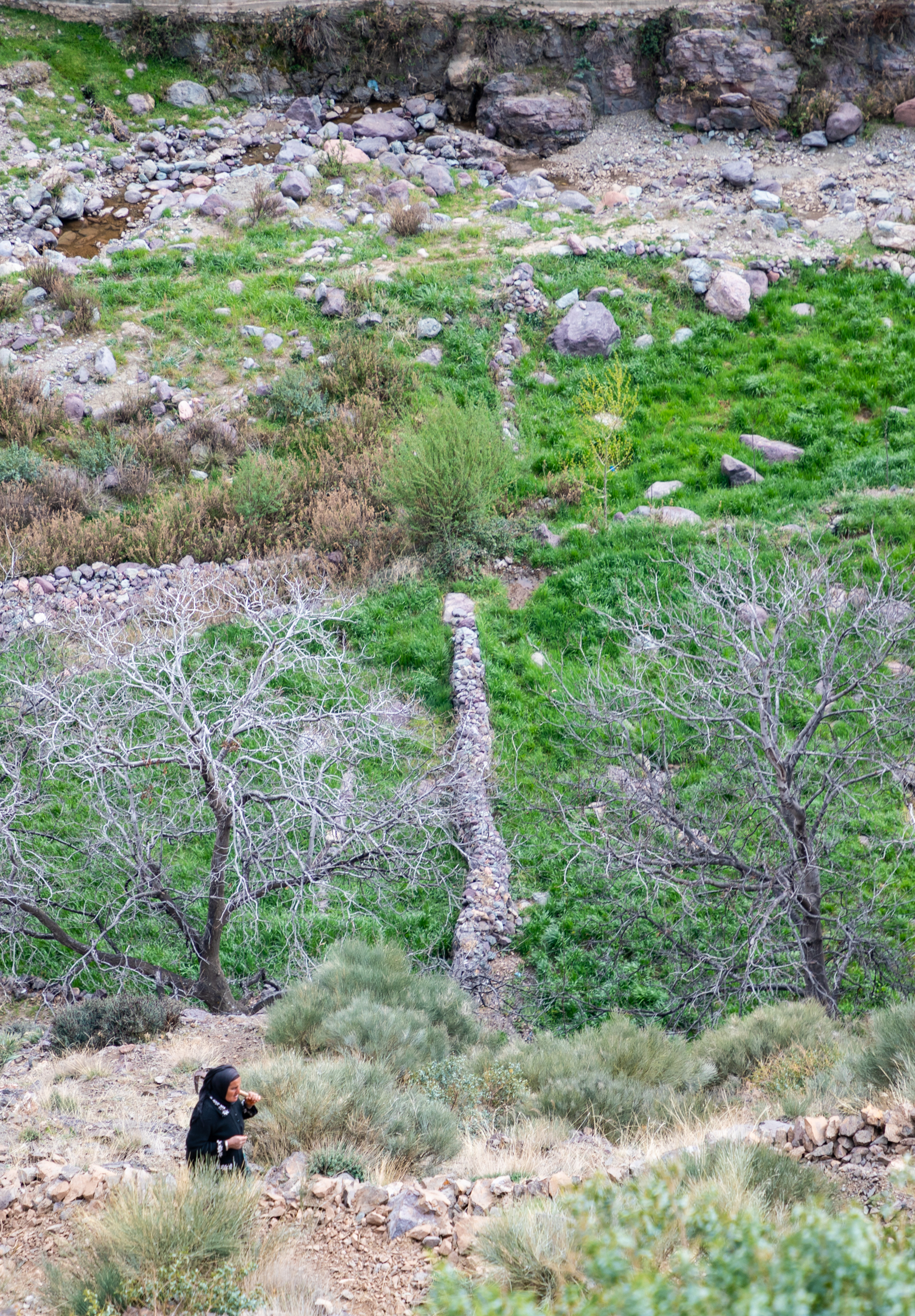

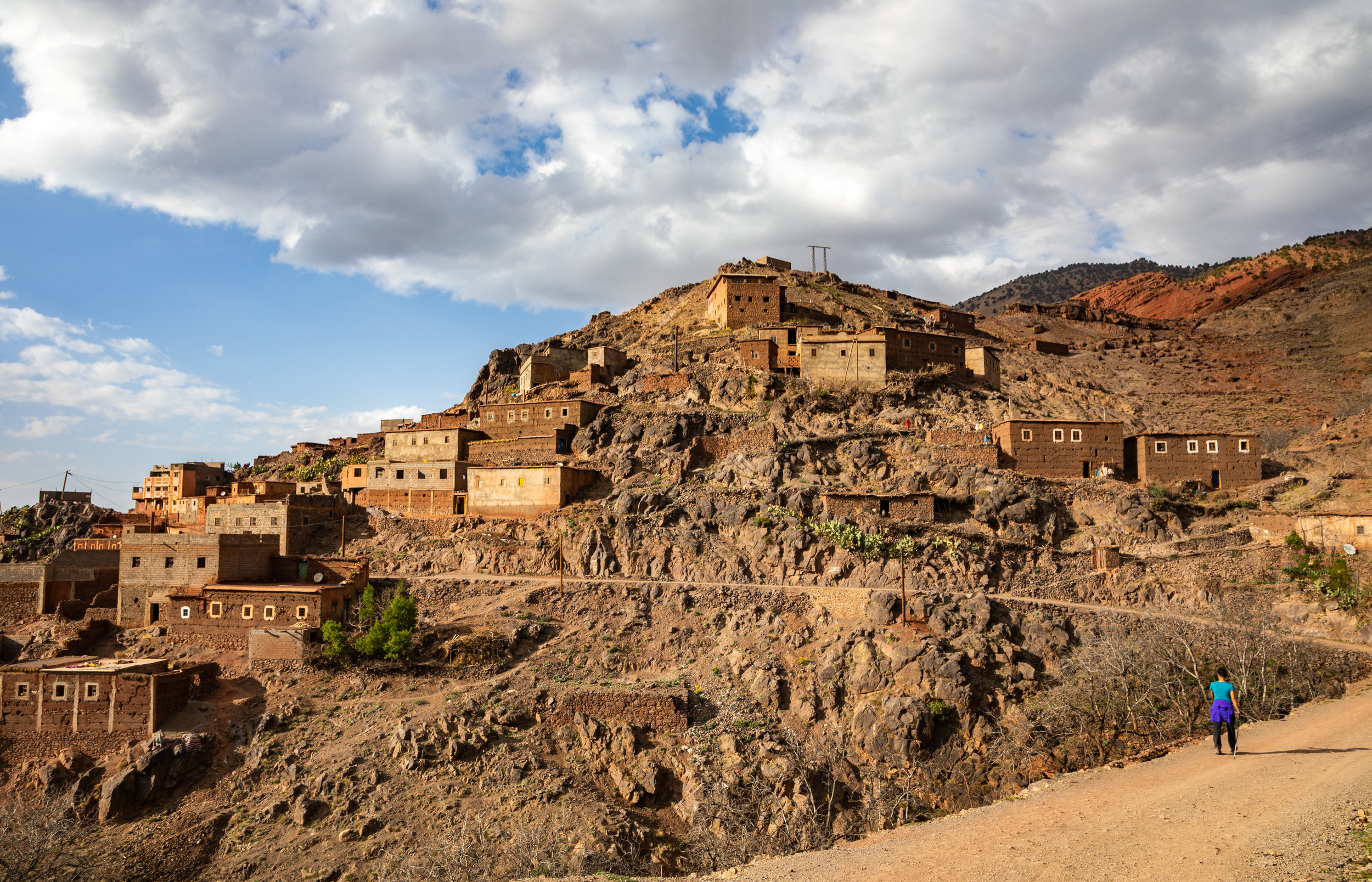
Tizzi Oussem. What a delightful sounding name. It both buzzes and rings in your mouth when you say it. This is the village where we spent the first night in dormitory style rooms with five mattresses covering the floor of each room.



Luckily, we had our own room. We arrived just before sunset and were able to observe the casual operations of the village from our balcony. Over here, a group of men gathered upon a large boulder. At the entrance of a house on the opposite side, a few women stood about chatting and giggling. Once in a while, one of them would disrupt the conversation with a loud reprimand directed at the kids running around. The best part was observing the kids in action. Just like all kids, their actions were unpredictable yet anticipated at the same time, the laughing and playing turning into fighting and crying. Kids!

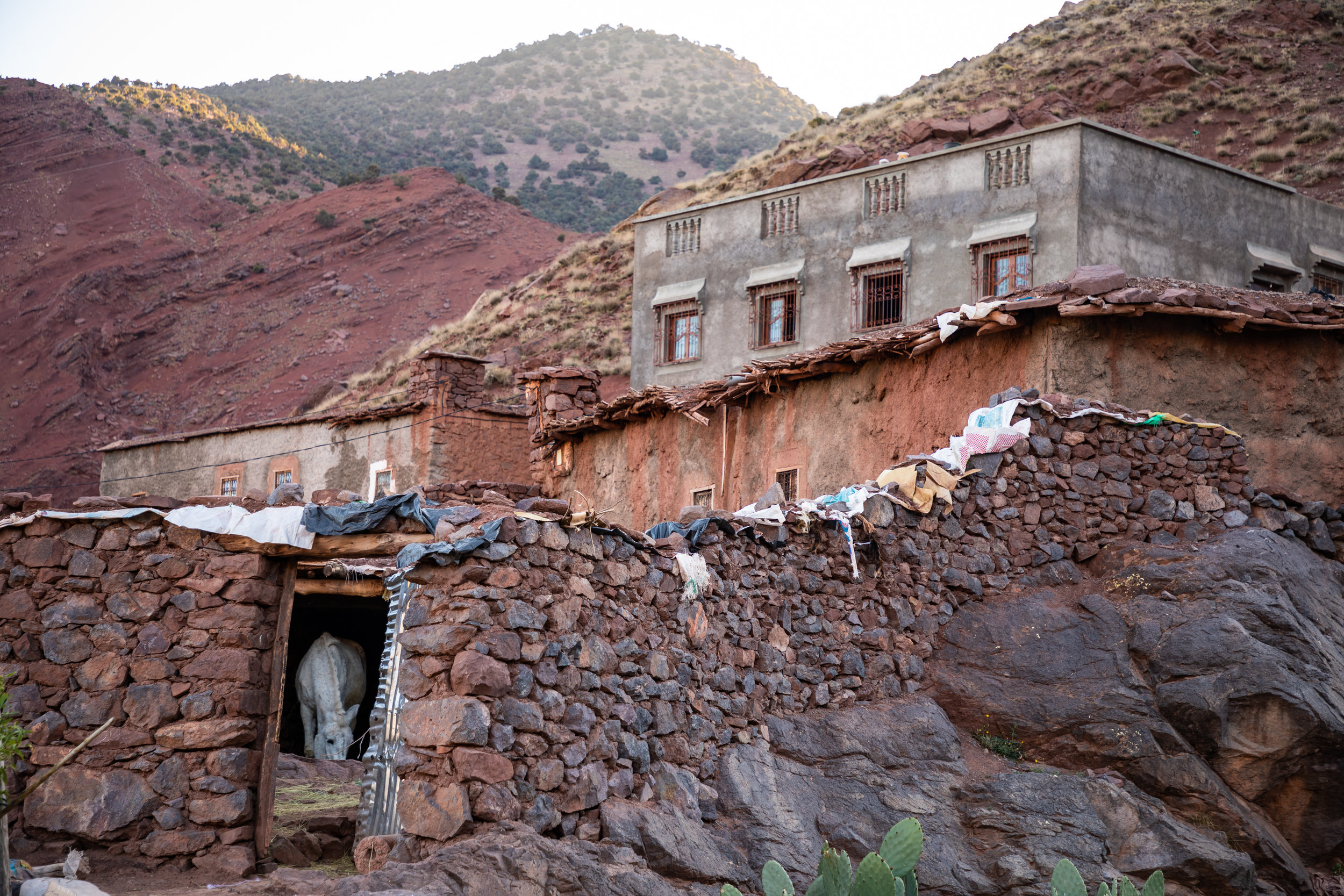

Atlas Mountain Trek - Day 2
Our gite was quite unusual as it was an unfinished building. Levels one and two were complete, but level three was still in its beginning phase. The next morning, we got up early and went to the top of the building for sunrise. Because we were surrounded by mountains, it took the sunlight a lot longer than we expected to reach the mountainsides. The second day began with a long descent from Tizzi Oussem to the valley floor where we crossed the rocky and mostly dry streambed to get to the village school. Kids have to make this hike up and down the mountain to get to school each day. That would count as physical education minutes in my book.

The Moroccan government is gearing up for increased tourism in this region. Lots of money is being invested in transportation infrastructure to support more people and activity. We can definitely see how this area has the potential to really explode with tourism now that everyone’s looking for the “unbeaten path”. We’re glad we took the opportunity to see now in its more raw and rugged stage.





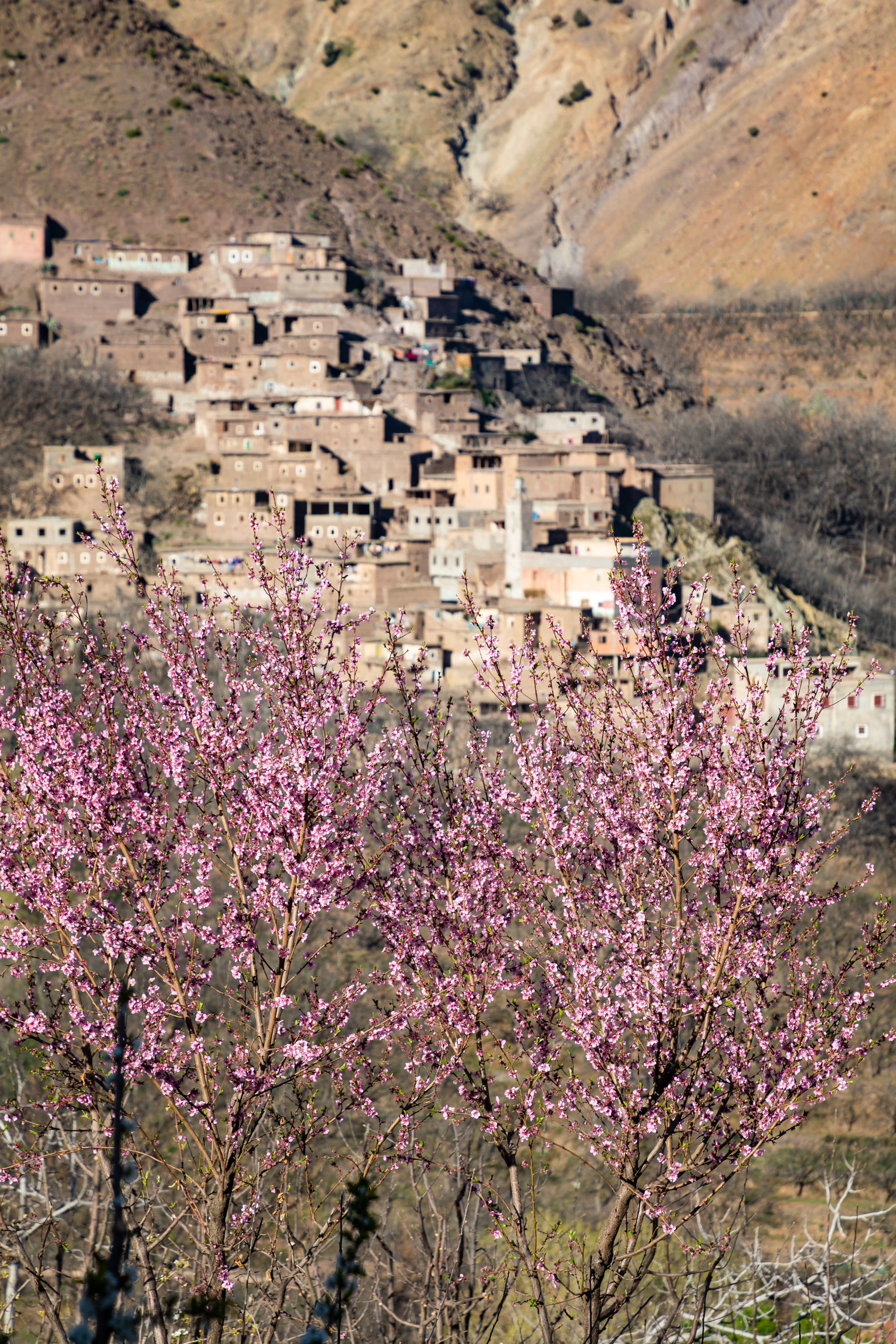

Throughout the day, we passed through many small villages. Unbeknownst to the world, chickens do algebra in this village.










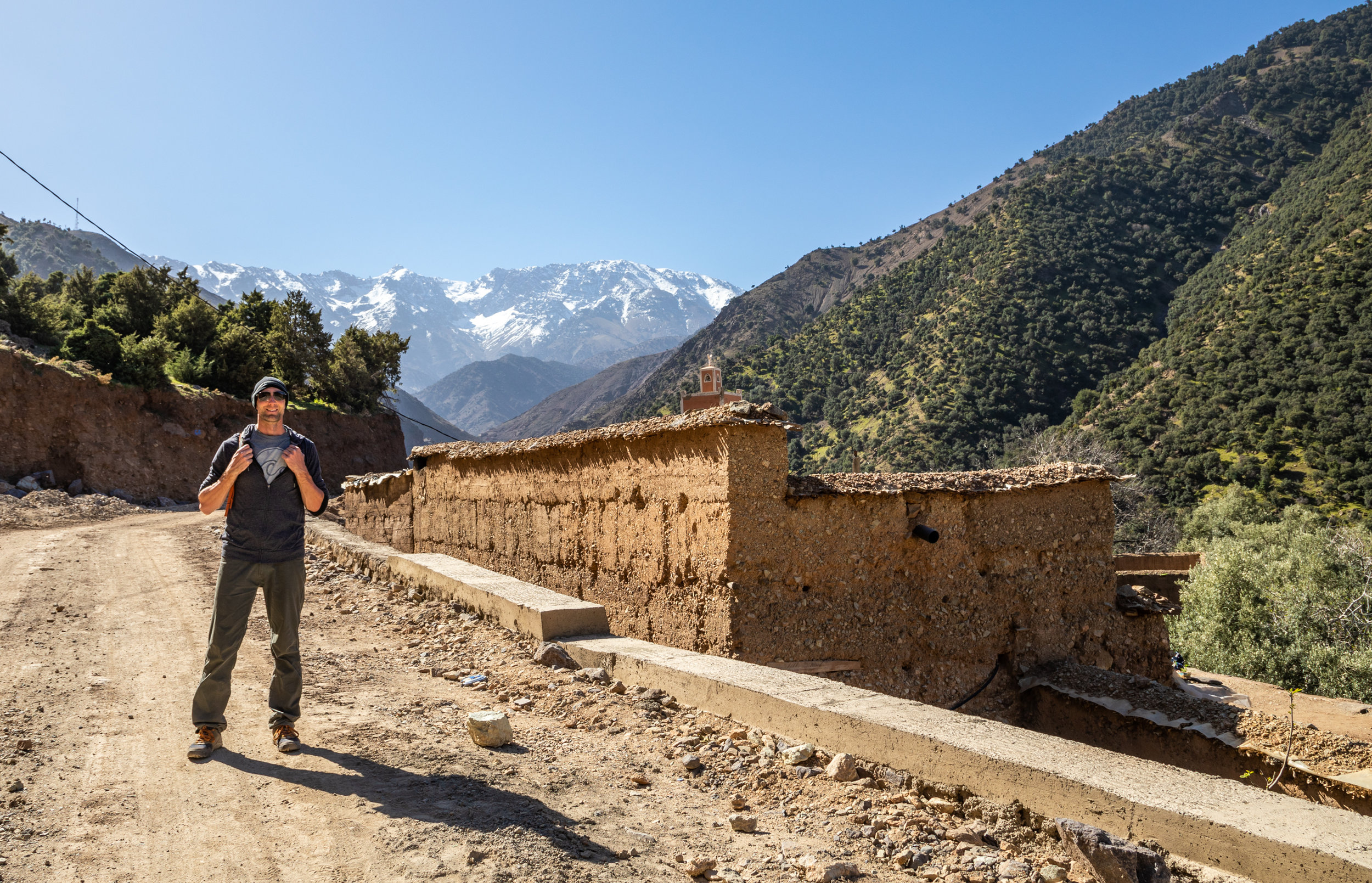

Once we started off the road and began a steep climb up the mountain, we knew Mohammed was taking us to our lunch spot, always at the highest point around. We enjoyed lunch among wild lavender and sage, under the shade of a juniper tree. Their calming aroma filled air.




At this point, we had to say good-bye to our cook and our mule. Our cook mainly spoke French with very limited English, so we didn’t communicate with him much, although he had such a lighthearted, jolly spirit about him. He was always humming and whistling as he worked. We learned that most pack animals used in the mountains are mules, not donkeys like we hand mistakenly thought. Mules are crossed between a horse and a donkey, thus female mules are unable to reproduce. Interesting.


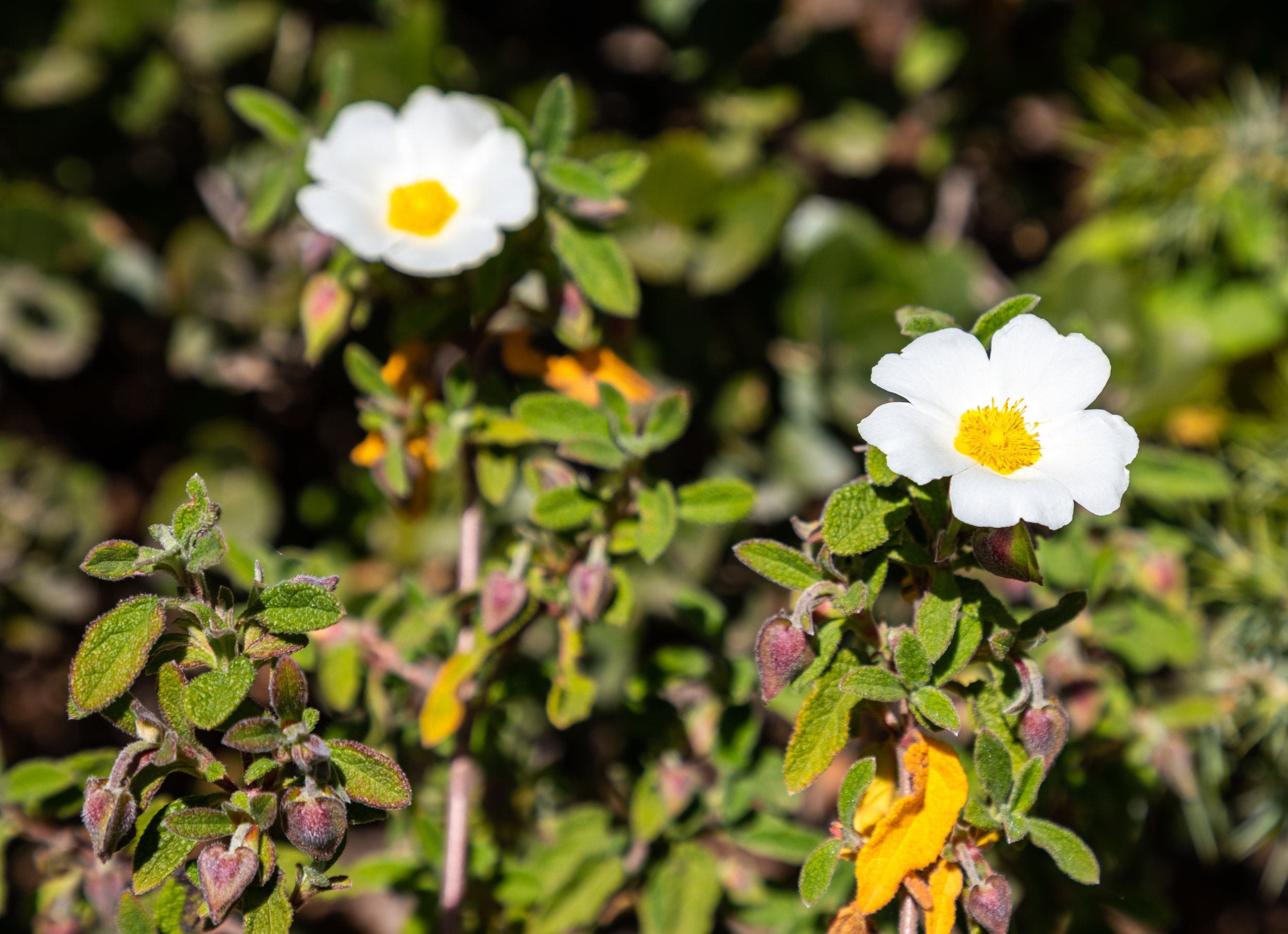
The pass over the mountain reminded me very much of the Central Valley in California, with oak trees shading the way. So it was with great surprise when the trees cleared out and the sight on the other side of the mountain was revealed. It was like we were back in Sedona, Arizona with its striated layers of orange cliffs dotted with green shrubbery.





To get to Ouirgane, we had to go through the ruins of a town many centuries old. Families were still living in sections that had not fallen down. I hope they had reinforced it somehow from the inside.





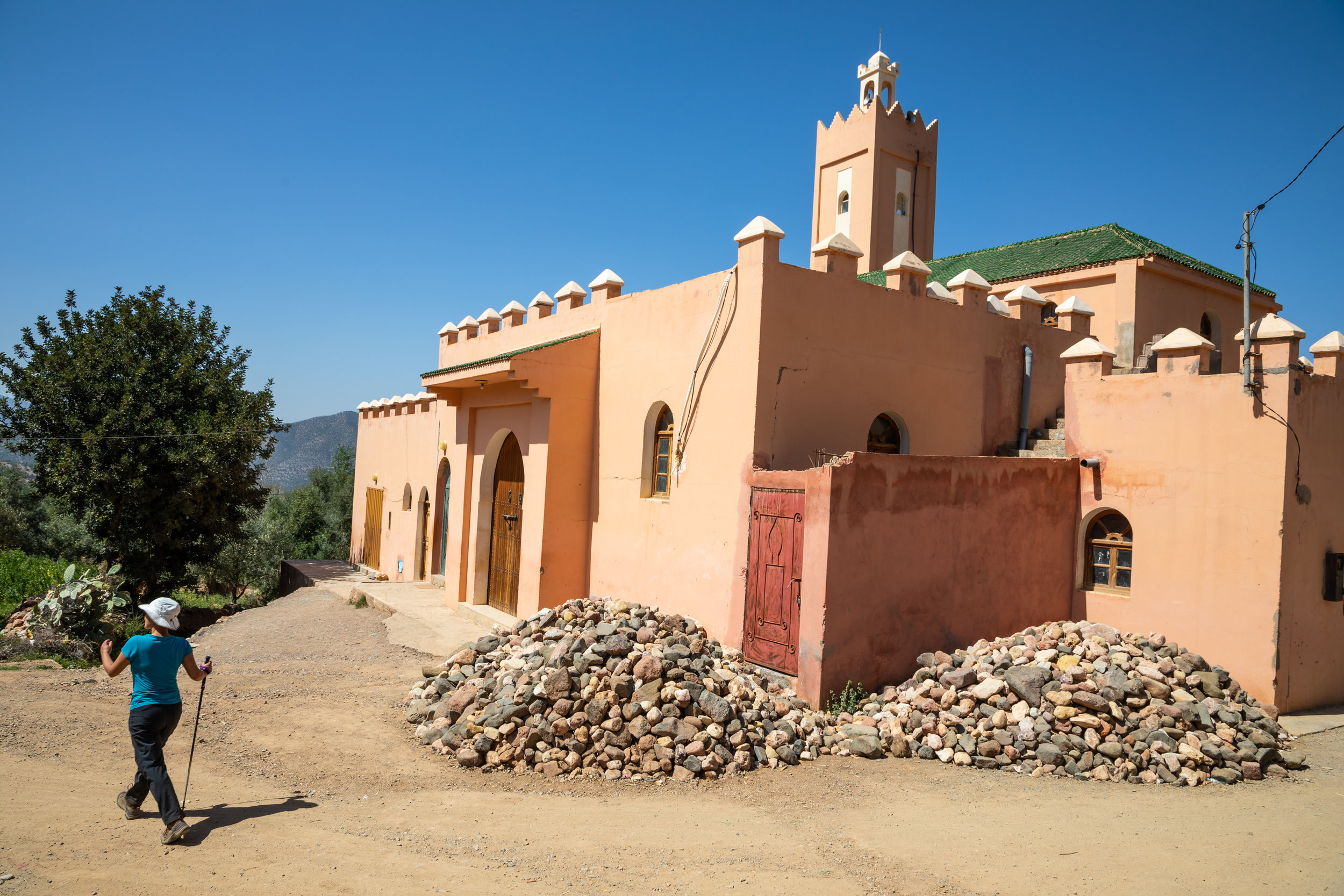
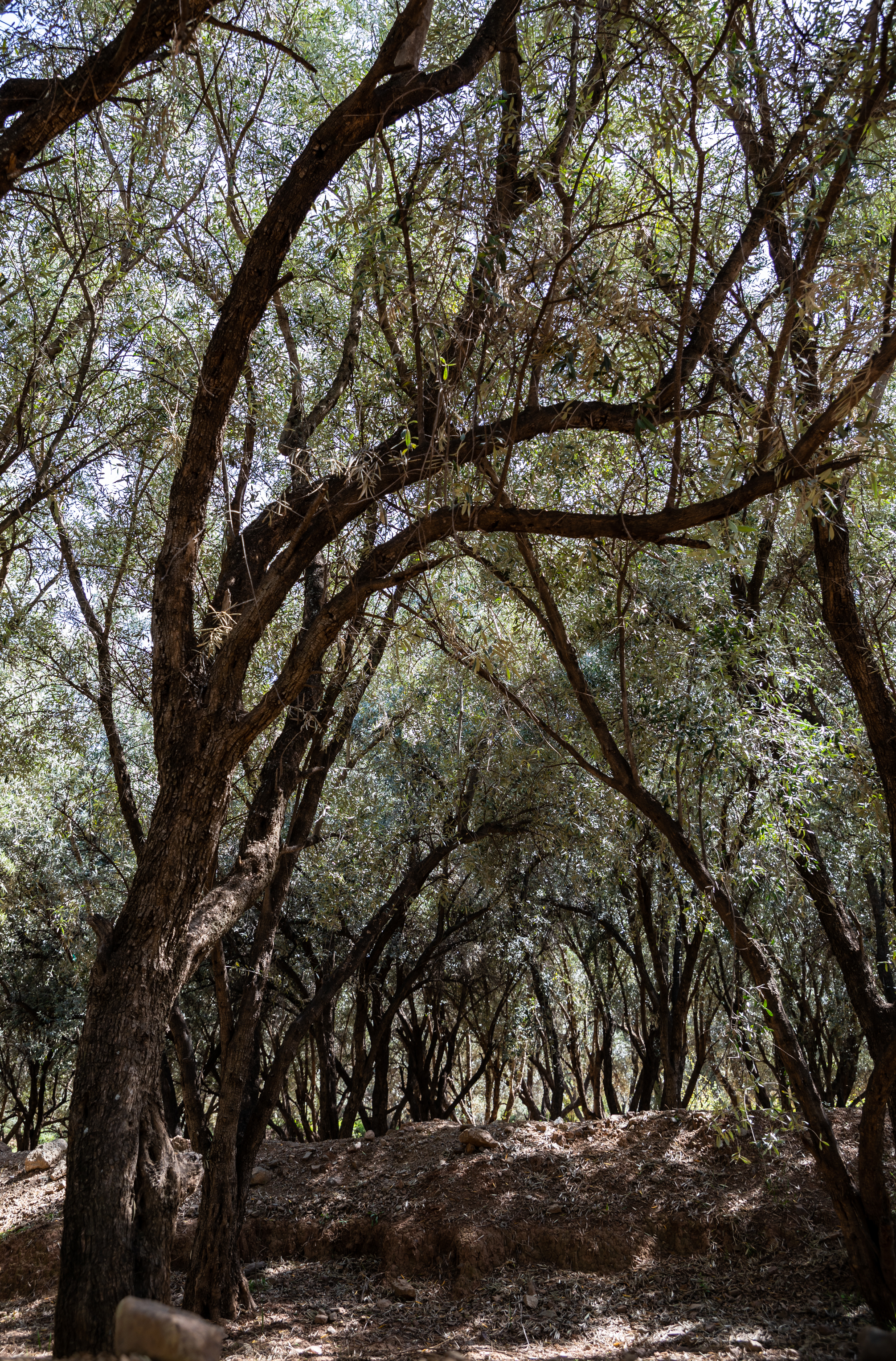

At the Ecolodge, we were welcomed with a tray of hot mint tea, seasoned nuts and olives. It was delightful after a warm walk. Hang joined us that afternoon. We spent two afternoons at this small but quaint Ecolodge. The pool was dreadfully cold, yet Hang and I jumped in anyways. After a few laps, we climbed out, cool and refreshed. It felt nice to just lounge around the pool and garden in the sun after the dip. We even found the cutest little tree frog. He kept jumping on Hang. After almost half an hour laughing and giggling as we chased him around the garden, we managed to get him to sit on our hands.
